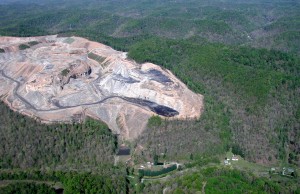Main Points:
- Individuals residing in areas where mountaintop removal is practiced experienced significantly more poor mental health days.
- 36% of persons in mountain top removal areas were mildly depressed.
- 17% of persons in mountain top removal areas were moderately depressed.
- 7% of persons in mountain top removal areas were severely depressed.
Overview Summary
- Study Background:
- The study is a cross-sectional analysis of 2006 Behavioral Risk Factor Surveillance System (BRFSS) data from Kentucky, Tennessee, Virginia, and West Virginia on the association between depression symptoms and residence in MTR communities, controlling for other depression risks.
- Data were analyzed from a survey of 8,591 adults residing in Central Appalachian areas both with and without coal mining.
- The BRFSS has eight items that measure each depression symptom.
- Findings:
- Results showed that diagnosable levels of major depression were present in almost 17% of respondents in mountaintop removal mining areas, compared to 10% of residents in non-mining areas.
- Mining residents are 1.40 times more likely to be at a level of diagnosable depression than non-mining residents.
- Air pollutants (sulfur dioxide and carbon monoxide) from mountaintop mining have been linked with greater incidence of emergency room visits for depression among those with preexisting depression.
- A significant association has also been found between elevated levels of ambient respirable particulate matter and suicide risk.
- Conclusions:
- The odds of a score indicative of risk for major depression were 40% higher in MTR areas compared to non-mining areas after statistical adjustment for other risks.
- Greater-all-cause mortality, cancer mortality, coronary heart disease mortality, and chronic cardiovascular disease mortality have associations to depression.
- Implications:
- This study documents significant connections between symptoms of depression and environmental disturbance.
- Policy Considerations:
- Both physical and mental well-being are enhanced by proximity to parks, gardens, wilderness areas, and other natural features.
- Jobs are in decline as machinery replaces labor, as coal reserves dwindle, and as other energy sources such as natural gas outperform coal in the marketplace.
- Funded by and/or conducted by:
- This is no competing financial interests by any of the authors.
Citation: Hendryx, M., and Innes-Wimsatt, K. A. “Increased Risk Of Depression For People Living In Coal Mining Areas Of Central Appalachia.” Ecopsychology 5.3 (2013): 179-187. British Library Document Supply Centre Inside Serials & Conference Proceedings. Web. 15 Feb. 2017.









